Health Benefits Of Kale
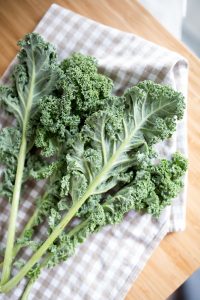 Did you know there are many different varieties of kale used in Irvine, CA? That ornamental kale you see in planters and on salad bars are different varieties than the ones you eat, but still edible. Even within the edible varieties, there are huge differences in flavor and appearance. For instance, red kale tastes milder than curly kale, and they both look and taste different than walking stick kale. What do they all have in common? It’s the health benefits of kale.
Did you know there are many different varieties of kale used in Irvine, CA? That ornamental kale you see in planters and on salad bars are different varieties than the ones you eat, but still edible. Even within the edible varieties, there are huge differences in flavor and appearance. For instance, red kale tastes milder than curly kale, and they both look and taste different than walking stick kale. What do they all have in common? It’s the health benefits of kale.
Add kale to your salads to boost flavor and nutrients.
This versatile veggie can be cooked or eaten raw. It’s becoming more and more popular in salads, especially when you consider how many more nutrients it offers compared to other leafy greens, like iceberg lettuce. It had a high amount of vitamin K, C, A and a large amount of copper and manganese. It also contains vitamins B1, B2, B3, B6 and E, folate, calcium, copper, potassium, iron, magnesium, phosphorous and Omega3 fatty acids. Kale is one of the most nutrient packed plants you can find.
Fill up on kale salad if you want to lose weight and stay healthy.
Kale is a low calorie option that tastes amazing. Create a big salad with kale, dried cranberries, pumpkin seeds and a vinaigrette dressing. It’s delicious and filling, but extremely low in calories. It offers plenty of protein and fiber, which is important for weight loss. You can use it as a side dish, too. The green you see in the Zuppa Toscana at the Olive Garden is kale. You can sauté kale with mushrooms and tomatoes as a side dish. There are many ways to include it in your diet to help you blast off the pounds, while enjoying every minute of eating.
There’s no better time than now to boost your immune system.
Kale is filled with potent antioxidants in the form of beta carotene and vitamin C. It also has flavonoids and polyphenols that help your immune system. These antioxidants help protect your cells from oxidative damage that can lead to aging, serious conditions and even death. The flavonoids in kale, kaempferol and quercetin offer anti-inflammatory, anti-viral, anti-depressant and anti-cancer benefits.
- Eating kale also helps you lower your blood pressure and protect your heart. It also has bile acid sequestrants that lower cholesterol levels.
- Kale reduces the potential for Alzheimer’s and dementia by providing nutrients that slow mental decline as you age.
- Kale contains high amounts of vitamin K and goitrogen that increase the blood clotting ability of the blood. If you’re on blood thinners or have hypothyroidism, always check with your health care professional before including kale in your diet.
- Spinach is almost as laden with nutrients as kale, including high amounts of calcium. However, spinach is also high in oxalate, while kale isn’t. Oxalate not only prevents absorption of calcium and other nutrients and may cause kidney stones.
For more information, contact us today at Next Level Fitness



 Do you burn the candle at both ends and wind up feeling fatigued or have a headache in the morning? Most people would blame that on lack of sleep, but the answer might be a bit more complicated. Maybe lacking sleep isn’t the exact problem, but dehydration is. What causes the dehydration? According to research published in the November 5, 2018, journal, Sleep, these symptoms occur because of dehydration, but the dehydration may occur because of the lack of sleep.
Do you burn the candle at both ends and wind up feeling fatigued or have a headache in the morning? Most people would blame that on lack of sleep, but the answer might be a bit more complicated. Maybe lacking sleep isn’t the exact problem, but dehydration is. What causes the dehydration? According to research published in the November 5, 2018, journal, Sleep, these symptoms occur because of dehydration, but the dehydration may occur because of the lack of sleep.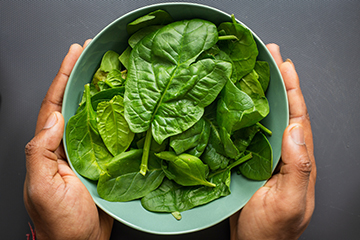
 There are a lot of foods that are high in iron, such as shellfish, liver and other organ meats, beef, turkey and fish. That’s normally where many people get iron in their diet. What about a vegetarian? What foods should they eat to get their daily supply of iron? Iron is important for the body. It is necessary in the blood to carry oxygen throughout the body. A deficiency leads to anemia and fatigue. Most at risk are menstruating women and people with certain conditions. There are some rich sources of iron in the plant world, however.
There are a lot of foods that are high in iron, such as shellfish, liver and other organ meats, beef, turkey and fish. That’s normally where many people get iron in their diet. What about a vegetarian? What foods should they eat to get their daily supply of iron? Iron is important for the body. It is necessary in the blood to carry oxygen throughout the body. A deficiency leads to anemia and fatigue. Most at risk are menstruating women and people with certain conditions. There are some rich sources of iron in the plant world, however.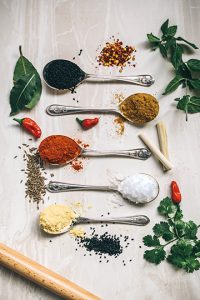 Do you really think that healthy food has to taste bland and boring? You’ll be surprised at how spicing up your meals not only makes it taste better, but also can benefit your health. Holy Basil, for instance, is used in Asian cooking, but is more often used for its health benefits. It helps you feel more relaxed and reduces the hormone of stress, cortisol. Sage is another herb that helps the body. In fact, it’s genus name, salvia, means to heal in Latin. The chemicals sage contains, such as luteolin, quercetin and rosmarinic, also improve memory and alertness.
Do you really think that healthy food has to taste bland and boring? You’ll be surprised at how spicing up your meals not only makes it taste better, but also can benefit your health. Holy Basil, for instance, is used in Asian cooking, but is more often used for its health benefits. It helps you feel more relaxed and reduces the hormone of stress, cortisol. Sage is another herb that helps the body. In fact, it’s genus name, salvia, means to heal in Latin. The chemicals sage contains, such as luteolin, quercetin and rosmarinic, also improve memory and alertness.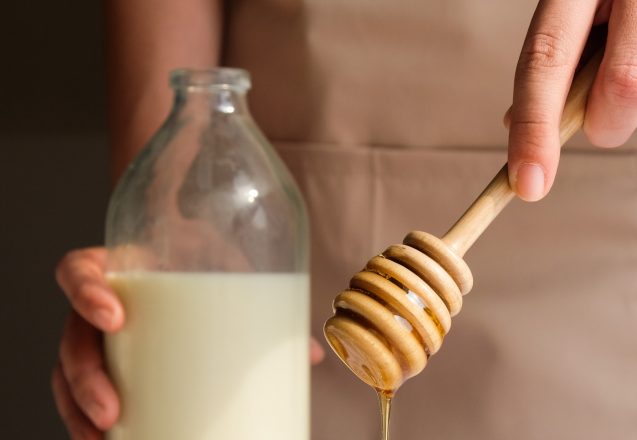
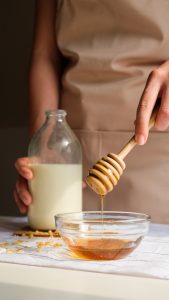 In Irvine, CA, there are many boutiques and health stores where you can purchase both raw and processed honey. Don’t be fooled by the grocery store honey that is often watered down and degraded with fructose additives, making it nothing but honey sugar syrup with none of the health benefits of honey. There is medical-grade honey, food-grade, raw honey, organic honey and pasteurized honey. To get the benefits, avoid the pasteurized or processed honey. The heating and treating kills the good bacteria and eliminates many of the health benefits. Buy from local beekeepers if possible.
In Irvine, CA, there are many boutiques and health stores where you can purchase both raw and processed honey. Don’t be fooled by the grocery store honey that is often watered down and degraded with fructose additives, making it nothing but honey sugar syrup with none of the health benefits of honey. There is medical-grade honey, food-grade, raw honey, organic honey and pasteurized honey. To get the benefits, avoid the pasteurized or processed honey. The heating and treating kills the good bacteria and eliminates many of the health benefits. Buy from local beekeepers if possible.
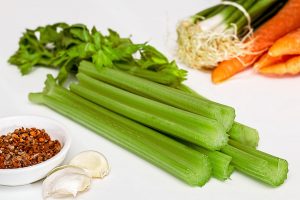 Are you searching for food that fills you up, but that has almost ZERO calories? Lots of people in Irvine, CA are doing the same thing. Finding foods with low or no calories isn’t as hard as you think. You start with food that normally is lower calorie, contains fiber and burns more calories to digest as it contains. These are called negative-calorie foods, which is a hot topic today.
Are you searching for food that fills you up, but that has almost ZERO calories? Lots of people in Irvine, CA are doing the same thing. Finding foods with low or no calories isn’t as hard as you think. You start with food that normally is lower calorie, contains fiber and burns more calories to digest as it contains. These are called negative-calorie foods, which is a hot topic today.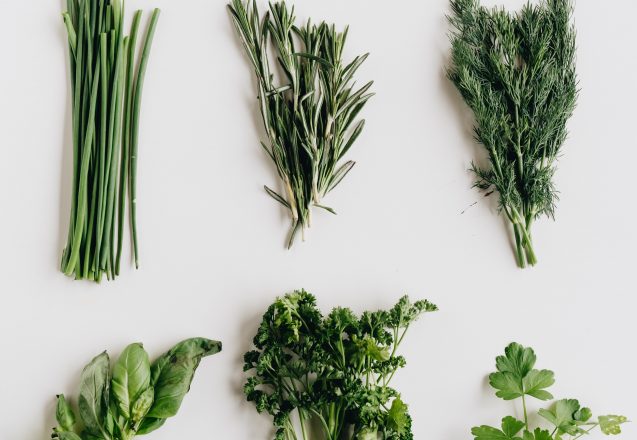
 Most people think of sex hormones when they see articles on how to balance your hormones. However, sex hormones aren’t the only hormones that get out of balance and affect your health and well-being. While perimenopause and menopause can definitely cause a hormone imbalance, there are other hormones that also do. Hormones regulate a lot of processes, which include the sleep cycle, metabolism, appetite, mood, stress levels and even body temperature. Even slight changes in insulin, androgens, thyroxine, cortisol or estrogen can trigger a problem. You can use herbs to help them get back into line.
Most people think of sex hormones when they see articles on how to balance your hormones. However, sex hormones aren’t the only hormones that get out of balance and affect your health and well-being. While perimenopause and menopause can definitely cause a hormone imbalance, there are other hormones that also do. Hormones regulate a lot of processes, which include the sleep cycle, metabolism, appetite, mood, stress levels and even body temperature. Even slight changes in insulin, androgens, thyroxine, cortisol or estrogen can trigger a problem. You can use herbs to help them get back into line.
 Everyone’s been there at one time or another. It’s just three to four hours since you ate lunch and you’re ready to melt into a puddle. Your energy level is down and you feel too worn out to do anything. What’s the first thing you do? It’s often start searching for something sweet. Don’t do that. While sugary products do give you energy, that energy dips as quickly as it came. Instead, opt for foods that give you more energy that lasts for hours. Make that snack a healthier option that also provides nutrients for your body to function properly.
Everyone’s been there at one time or another. It’s just three to four hours since you ate lunch and you’re ready to melt into a puddle. Your energy level is down and you feel too worn out to do anything. What’s the first thing you do? It’s often start searching for something sweet. Don’t do that. While sugary products do give you energy, that energy dips as quickly as it came. Instead, opt for foods that give you more energy that lasts for hours. Make that snack a healthier option that also provides nutrients for your body to function properly.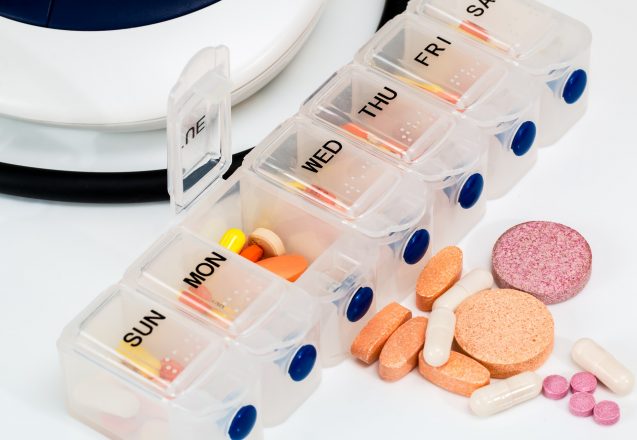
 When you think of supplements, does your mind immediately think of that multivitamin you take in the morning or do you think of the protein supplement you’re taking to boost your muscle development. One of the biggest dangers of taking supplements is thinking they substitute for a healthy diet. They don’t. There are a lot of different types of supplements. Some are made from ordinary ingredients, like fruits and vegetables that are freeze-dried, ground and capsulized. Some are exotic herbs, which may not be as healthy as you think or protein supplements that may cause other problems.
When you think of supplements, does your mind immediately think of that multivitamin you take in the morning or do you think of the protein supplement you’re taking to boost your muscle development. One of the biggest dangers of taking supplements is thinking they substitute for a healthy diet. They don’t. There are a lot of different types of supplements. Some are made from ordinary ingredients, like fruits and vegetables that are freeze-dried, ground and capsulized. Some are exotic herbs, which may not be as healthy as you think or protein supplements that may cause other problems.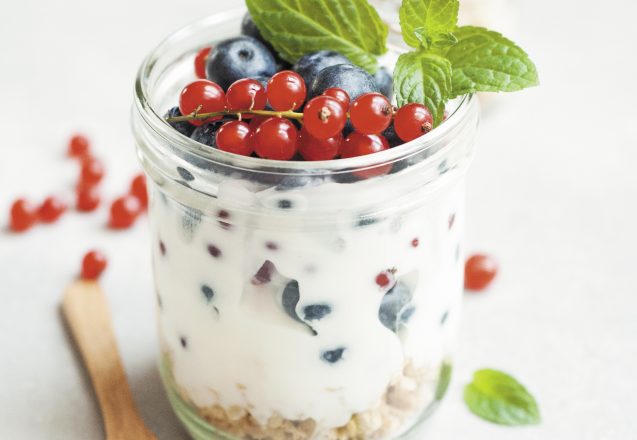
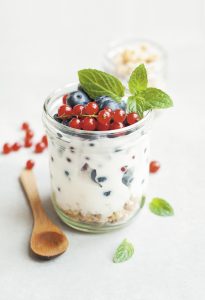 If you’re like many people, you find yourself rushed in the morning, barely able to put toast in the toaster. Making a healthy breakfast may be important to help you lose weight, but when time is at a premium, something has to give. Overnight oats is a healthy breakfast option that doesn’t require cooking. You simply combine the oats, whether it’s rolled, steel cut or quick cook, into a container like a Mason jar, and add any type of milk, such as coconut, almond or regular. Put the lid on, shake and store it in the refrigerator. In the morning, they’ll be soft from absorbing the liquid, as though you cooked them.
If you’re like many people, you find yourself rushed in the morning, barely able to put toast in the toaster. Making a healthy breakfast may be important to help you lose weight, but when time is at a premium, something has to give. Overnight oats is a healthy breakfast option that doesn’t require cooking. You simply combine the oats, whether it’s rolled, steel cut or quick cook, into a container like a Mason jar, and add any type of milk, such as coconut, almond or regular. Put the lid on, shake and store it in the refrigerator. In the morning, they’ll be soft from absorbing the liquid, as though you cooked them.